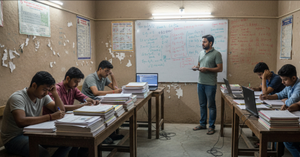In a major step toward aligning state education with national standards, the Maharashtra State Board of Secondary and Higher Secondary Education has introduced a new “Bridge Course” for students transitioning to a revised curriculum. This initiative is being rolled out as part of the state's implementation of the National Education Policy (NEP) 2020.
What is a Bridge Course?
A bridge course is a short-term academic program designed to help students adjust to a new curriculum or learning system. In this case, Maharashtra is shifting from its traditional syllabus to one more closely aligned with NCERT textbooks and NEP standards.
The bridge course will be introduced at various entry points — most notably for students moving into Class 6, 9, and 11, where curriculum transitions are most sensitive.
Objectives of the Bridge Course
- Filling Learning Gaps: Many students may find the new curriculum challenging if their previous classes were based on different content. The bridge course will address this.
- Concept Revision: It will revisit foundational topics in Mathematics, Science, and Language to ensure continuity.
- Skill-Based Learning: Activities, worksheets, and interactive content will help students develop analytical skills, not just rote memory.
- Teacher Support: Teachers will be given orientation and training to deliver the course effectively within the classroom timeline.
Structure of the Program
- Duration: 4 to 6 weeks (beginning of academic year)
- Format: Classroom teaching + workbook exercises + self-assessment tools
- Evaluation: Diagnostic assessments to measure effectiveness and readiness
Why the Sudden Need?
The new curriculum is more concept-driven and less textbook-heavy. Many students — particularly in rural or under-resourced schools — may struggle with the transition. The bridge course is designed to ensure that no child is left behind.
Additionally, the bridge course supports language transition, particularly for students moving from Marathi-medium schools to English-medium instruction at higher levels.
Long-Term Impact
This move is expected to reduce the academic burden on students while improving learning outcomes, retention rates, and overall conceptual clarity. Maharashtra is among the first large states to implement this structured transition approach — setting an example for others.









Be the first one to comment on this story.